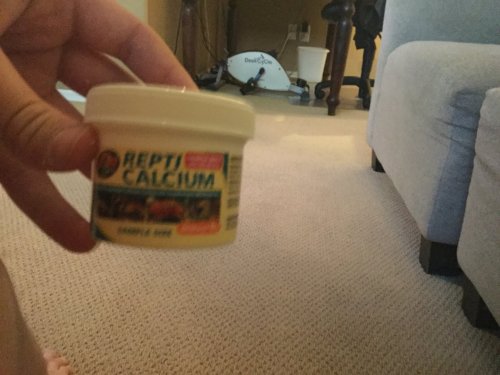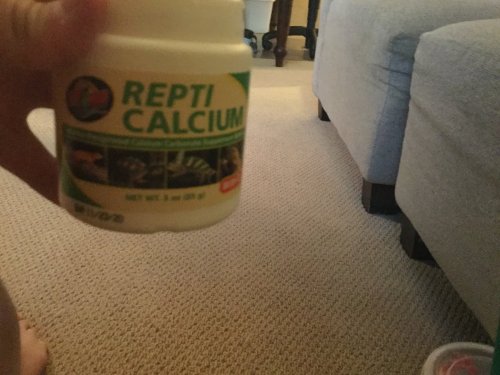Navigation
Install the app
How to install the app on iOS
Follow along with the video below to see how to install our site as a web app on your home screen.
Note: This feature may not be available in some browsers.
More options
You are using an out of date browser. It may not display this or other websites correctly.
You should upgrade or use an alternative browser.
You should upgrade or use an alternative browser.
Leapord gecko
- Thread starter Harry The Cham
- Start date
Harry The Cham
Established Member
I feel bad i rescues them both they are siblings but I do not think they needed be separated I have extra tanks if I ever need to though. They’ve never nipped one another also I thought leapord geckos could be with others
Harry The Cham
Established Member
I’ve read several articles saying you could house multiple
Last edited:
CJ's Exotics
Chameleon Enthusiast
Don't try to house them together, there are too many issues, if you want, I will name some of the less obvious ones. Just because it can be done, doesn't mean you should do it. BTW, why did you house them together and hope for breeding if you know that they are siblings?
Harry The Cham
Established Member
No I don’t! Want them to breed I would feel superrrrr weirded out lol also if I notice a problem I will Immediatly swap them out thank you everybodyDon't try to house them together, there are too many issues, if you want, I will name some of the less obvious ones. Just because it can be done, doesn't mean you should do it. BTW, why did you house them together and hope for breeding if you know that they are siblings?
Harry The Cham
Established Member
I was hoping it’s a girl to make sure they wouldn’t breed which I’m glad she is
Harry The Cham
Established Member
I wish she has the proper care from her previous owner I’m not sure how th8s happened they were sold to me without informing me of the problem it’s super had to get a leapord gecko sick and the man som pe how managed to do that

I had a trio (1.2) of Leo's together for over 19 years. They never fought and each year produced several clutches of babies. There were lots of places for them to hide and at one point an egg I missed digging up hatched in the cage. The baby remained hidden from me until it was several months old. When I did notice it finally it was healthy and luckily a female. I didn't want it to be mating with it's dad though so I moved it in with my other unrelated group of three (1.2). I think because they are seasonal breeders it can work. Just my experience/two cents worth.
Hopefully the back legs are from an old and corrected MBD incident and all is well now. Do you have a UVB light on the cage? How do you supplement them? What do you feed the insects? Do you have a warm end and a cooler end to their cages?
I used to keep a bottle lid in the cages with some phosphorous-free calcium powder in it so they could lick some up if they needed it.
Hopefully the back legs are from an old and corrected MBD incident and all is well now. Do you have a UVB light on the cage? How do you supplement them? What do you feed the insects? Do you have a warm end and a cooler end to their cages?
I used to keep a bottle lid in the cages with some phosphorous-free calcium powder in it so they could lick some up if they needed it.
Harry The Cham
Established Member
Yes I use D3 2-3 times a mo th and without D3 every other feeding I’ll send pics of my supplement and I do use UVB and a heat source on one side and cool on the other with several hiding places and another cage for I use a lot that’s 40 gallons
Harry The Cham
Established Member
Harry The Cham
Established Member
I do believe this was an old MBD incident and that the bones never healed right nothings has gotten worse and he’s actually more active the other one
Last edited:
Bmjo
Established Member
I thought they were siblingsNo I don’t! Want them to breed I would feel superrrrr weirded out lol also if I notice a problem I will Immediatly swap them out thank you everybody
Harry The Cham
Established Member
They are
Bmjo
Established Member
Don’t let them breedThey are
Harry The Cham
Established Member
Uh their both femaleDon’t let them breed
Bmjo
Established Member
Oh yeah i forgot lolUh their both female
Harry The Cham
Established Member
Haha it’s okOh yeah i forgot lol
Goose502
Chameleon Enthusiast
I too kept a 1.3 ratio together for years. There was a pecking order that sorted itself out among the females, but no issues really to speak of. It was a large enclosure, with over a dozen hides situated at multiple levels. I really enjoyed keeping them. I had given them away after a few years, and I’m happy to say they’re all still alive (now living separately), and most of the offspring have survived and now reproduced many times (again, with there prospective owners).I had a trio (1.2) of Leo's together for over 19 years. They never fought and each year produced several clutches of babies. There were lots of places for them to hide and at one point an egg I missed digging up hatched in the cage. The baby remained hidden from me until it was several months old. When I did notice it finally it was healthy and luckily a female. I didn't want it to be mating with it's dad though so I moved it in with my other unrelated group of three (1.2). I think because they are seasonal breeders it can work. Just my experience/two cents worth.
Hopefully the back legs are from an old and corrected MBD incident and all is well now. Do you have a UVB light on the cage? How do you supplement them? What do you feed the insects? Do you have a warm end and a cooler end to their cages?
I used to keep a bottle lid in the cages with some phosphorous-free calcium powder in it so they could lick some up if they needed it.
CJ's Exotics
Chameleon Enthusiast
I really want morning geckos!I enjoyed mine too. I also enjoyed a pair of fat tails and mourning geckos (only females needed to reproduce), mosaic geckos, Madagascar ground geckos, leaf tailed geckos, frog eyed sand geckos, etc.
Similar threads
- Replies
- 1
- Views
- 462
- Replies
- 4
- Views
- 272



